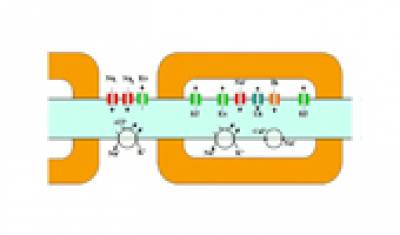The Graham Watts Laboratories for Research into Motor Neuron Disease
Lab. Head: Professor Linda Greensmith
Current research projects
Some of the major research themes currently being studied by the group include the following:
1) The neuroprotective role of the heat shock response in motor neuron disease
In recent years, our research has concentrated on identifying pathways that may be targeted for therapeutic intervention in motor neuron diseases such as ALS. For example, we have shown that pharmacological up-regulation of an endogenous cellular defence mechanism, the heat shock response, can protect motoneurons from cell death and extend life span in the SOD1 mouse model of ALS. Following treatment of ALS mice with arimoclomol we observed a significant delay in disease progression, improvement in motor performance resulting in an increase in lifespan (Kieran et al, 2004; Nature Medicine 10, 402-405). This drug is now in Phase II clinical trials in ALS patients in the USA. However, in order to optimize this approach we are currently studying the precise mechanism and site of action of compounds that modulate the heat shock response. The results of this study will also help to characterize the role of non-neuronal cells in disease progression and may help to identify novel therapeutic targets, both in terms of cell type as well as specific elements of the heat shock response.
2) Pathogenesis of ALS - The role of axonal transport defects in motor neuron disease
We have also had some success in identifying novel pathways that may play a significant role in the pathogenesis of disease in ALS mice. In collaboration with Professor Elizabeth Fisher in the Department of Neurodegeneration at IoN and Dr Giampietro Schiavo at Cancer Research UK, we have shown that one of the earliest pathologies to manifest in ALS mice is a defect in retrograde axonal transport (Kieran et al, 2005; J. Cell Biology 169, 561-567). Moreover, we have shown that this defect can be rescued by a mutation in a motor protein called dynein, resulting in a significant amelioration in disease in the ALS mice. Together with another collaborator on this project, Dr Majid Hafezparest at the University of Sussex, we are currently investigating the mechanism by which interaction between two mutant proteins can have such beneficial effects and hope that by understanding this mechanism we will be able to identify novel drug targets.
3) Mitochondrial dysfunction in motor neuron disease
In another collaboration with Professor Michael Duchen (Department of Physiology, UCL), we are investigating the physiological consequences imposed by the expression of the mutant SOD1 enzyme on primary cells in culture. Mutant SOD1 is responsible for around 20% of familial cases of ALS. A very early feature of motoneuron dysfunction in SOD1 transgenic mice is the appearance of abnormal mitochondria. We are therefore studying cellular calcium homeostasis and mitochondrial status in SOD1 motoneurons using digital imaging and confocal microscopy.
4) Developing novel therapies for motor neuron disease
We have several ongoing projects in which we are studying the efficacy of novel therapeutic approaches in models of ALS. One such project is focused on the possibility that a loss of target-derived neurotrophic support may be a contributory factor in motoneuron degeneration in ALS. Insulin-derived growth factor (IGF-I) is a neurotrophic factor that has been shown to have significant benefit in models of ALS. In collaboration with Dr Richard Orrell we have been testing the potential benefits of a splice variant of IGF-1, termed mechanogrowth factor (MGF) in the SOD1 mouse model of ALS. In another project we have been evaluating the potential beneficial effects of cannabinoids in ALS. Cannabinoids may have therapeutic potential in many neurodegenerative conditions as they exert neuroprotective effects under excitotoxic, ischaemic and inflammatory conditions. In collaboration with Professor David Baker, we have found that increasing cannabinoid levels in SOD1 mice has significant neuroprotective actions particularly during the early stages of disease (Bilsland et al, 2006; FASEB J. 20, 1003-1005). We are currently working to unravel the molecular mechanism of these neuroprotective effects in order to optimize the therapeutic potential of cannabinoids in ALS.
5) Spinal Bulbar Muscular Atrophy (SBMA)/ Kennedy's Disease
Our group has recently started a new collaborative project examining motnruron degeneration in another motor neuron disorder called Kennedy's Disease or Spinal Bulbar Muscular Atrophy (SBMA). SBMA is an inherited lower motoneuron degenerative disorder associated with partial androgen insensitivity, resulting from a CAG triplet repeat expansion in the androgen receptor (AR) gene on the x-chromosome. This was the first triplet repeat disease to be described. Despite much research on KD and closely related polyglutamine disorders such as Huntington's disease, the mechanisms behind these diseases remains unknown, and no effective treatments are presently available. This research project is undertaken in collaboration with Professor Mike Hanna and Professor Albert La Spada in Seatle, USA, who has developed an excellent mouse model of SBMA. We are using a number of laboratory based techniques to improve our understanding of the pathological mechanisms by which motoneurons die in SBMA, in order to hopefully identify novel targets for development of a successful therapy.
 Close
Close


